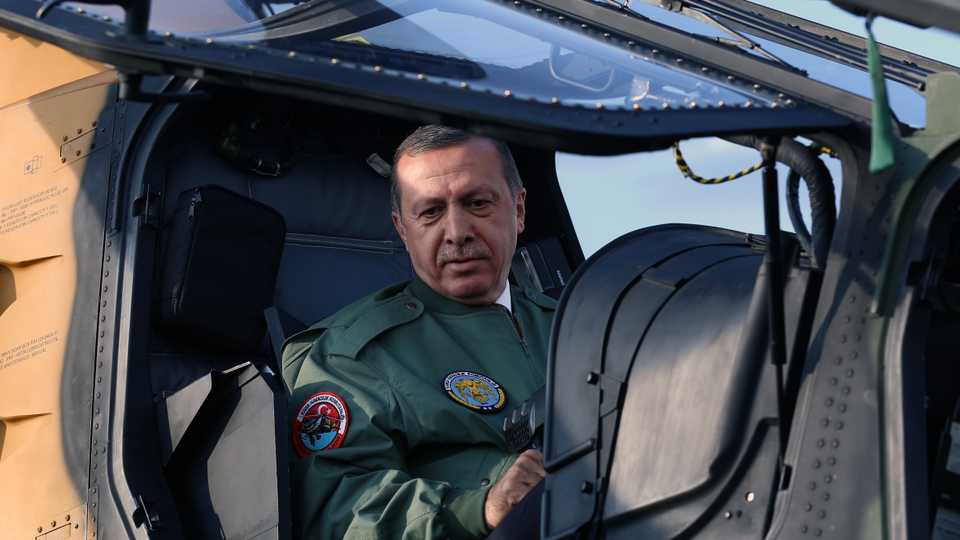
Turkey has increased its military capacity by investing in the defence industry in the last decade. Amid internal and external threats to its national security, Turkey has become one of the growing exporters of military equipment, including heavy weapons, in the region.
The Turkish Armed Forces conducted Operation Euphrates Shield between August 2016 and March 2017 in north Syria and is now in the midst of Operation Olive Branch in northwest Syria’s Afrin against the YPG, the Syrian branch of the PKK, and Daesh.
The fight against the PKK – a group that has waged war against Turkey for decades, leaving more than 40,000 people dead – has been ongoing since the 1980s in the country.
Turkish military operations in Syria employ a wide range of domestically produced high-tech unmanned aerial vehicles, tanks, missiles and radar systems. The success of cross-border operations shows Turkey’s progress in the military industry.
Turkey’s President Recep Tayyip Erdogan on February 21, said, “In many fields of the defence industry, we now have national technologies. We successfully eliminate many internal and external threats by means of domestic and national production. If we needed someone else’s support in Afrin, we would not be at this point, now.”
“Yet we need to be able to manufacture unmanned tanks, and we will do this,” he added.
The Vision for 2023 for the centenary of the Republic of Turkey, declared by Erdogan, is a list of goals that includes ranking in the top 10 economies in the world and becoming a self-sufficient state in terms of defence.
There are many private companies and public enterprises working on producing high-tech military equipment such as ASELSAN, Turkish Aerospace Industries, Havelsan, Roketsan, TUBITAK, Baykar, Tusas and FNSS Defence Systems.
Motives of Turkey
Turkey’s efforts to promote its indigenous arms rely on three main reasons: to stimulate the economy, maintain its army – which is the second biggest among the NATO countries – and self-sufficiency by 2023.
Turkey had spent billions of dollars to build and expand its army by importing arms, predominantly from the US and Germany, for many years.
With the Justice and Development (AK) Party coming into power in 2002, Turkey’s military expenditure had steadily gone down for a while. But from 2005, the governing AK Party’s program for investment in domestic arms projects slightly increased the country’s spending.
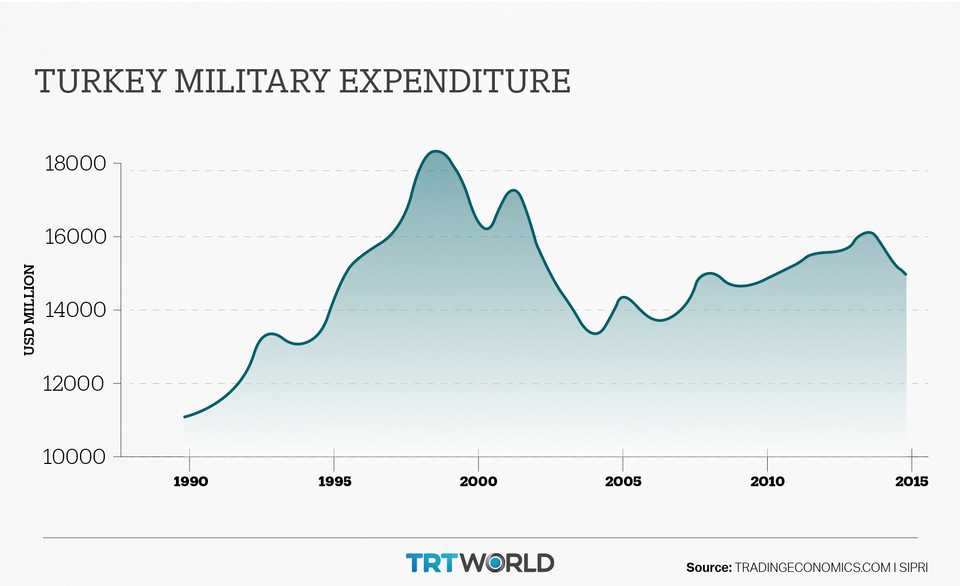
Exporting domestically manufactured arms led to an acceleration of the Turkish defence industry in the global market. According to Stockholm International Peace Research Institute’s (SIPRI) data, Turkey substantially increased arms export by 145 percent between 2013-2017, having the highest percentage increase in the world.
It also helps to overcome the problems with the countries Turkey has been importing arms from. For instance, the US Congress denied the transfer of a number of ships to Turkey on December 2014, despite a pre-existing signed deal, due to Turkey’s stance against Israel.
German Chancellor Angela Merkel also announced halting the modernisation of German-made Leopard tanks used by Turkey in January due to Turkey’s Operation Olive Branch. The German government delayed upgrades, citing concerns of human rights violations.
More on that: according to the inventory of the Turkish Armed Forces, most of the tanks, helicopters and some heavy weapons are from the Cold War era, proving that the NATO ally hasn’t been able to import new technologies for many years now. The technology of these units is out of date.
Domestically produced offensive weapons
Bayraktar TB2
The Turkish-made Bayraktar TB2 drones are equipped with the latest smart ammunition systems and have been deployed for tactical reconnaissance and surveillance missions since 2014.
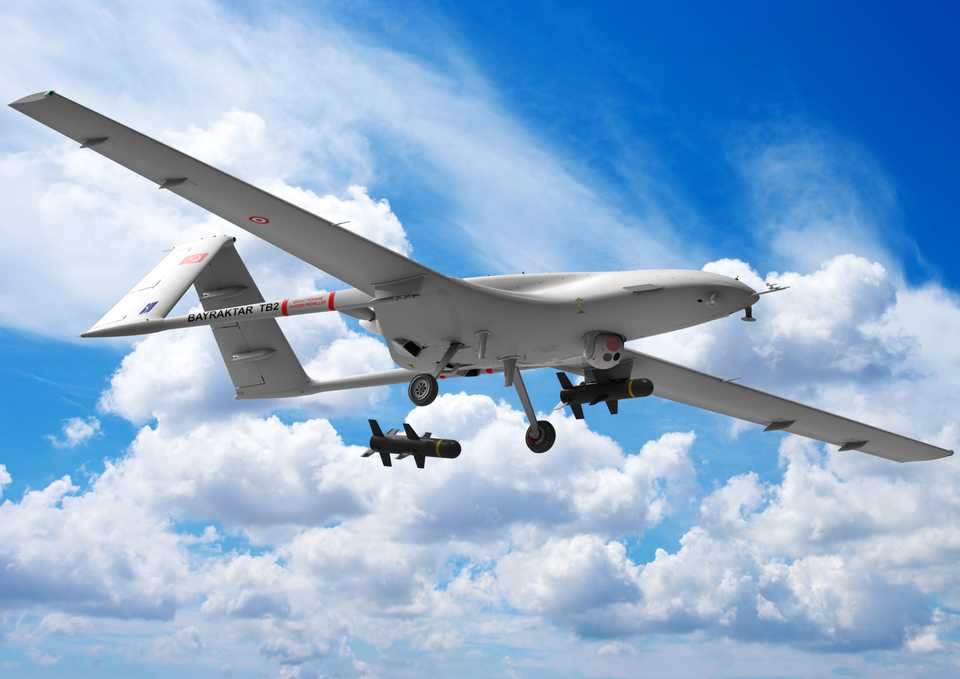
During cross-border operations in northwest Syria’s Afrin, these drones were effective in locating YPG bases and their armouries.
T-155 Firtina
Another domestically designed and manufactured weapon: T-155 Firtina, which means ‘storm’ in English, is a self-propelled howitzer that can hit targets located at a 40 km distance in 30 seconds.

The T-155 has been shipped to many bases in Hatay and Kilis provinces bordering Syria as part of the Operation Olive Branch in January.
T-129 ATAK
T-129 ATAK helicopters, with its guided air-to-ground CIRIT rockets, are used to hit numerous targets that have been laser-marked beforehand by forces on the ground.
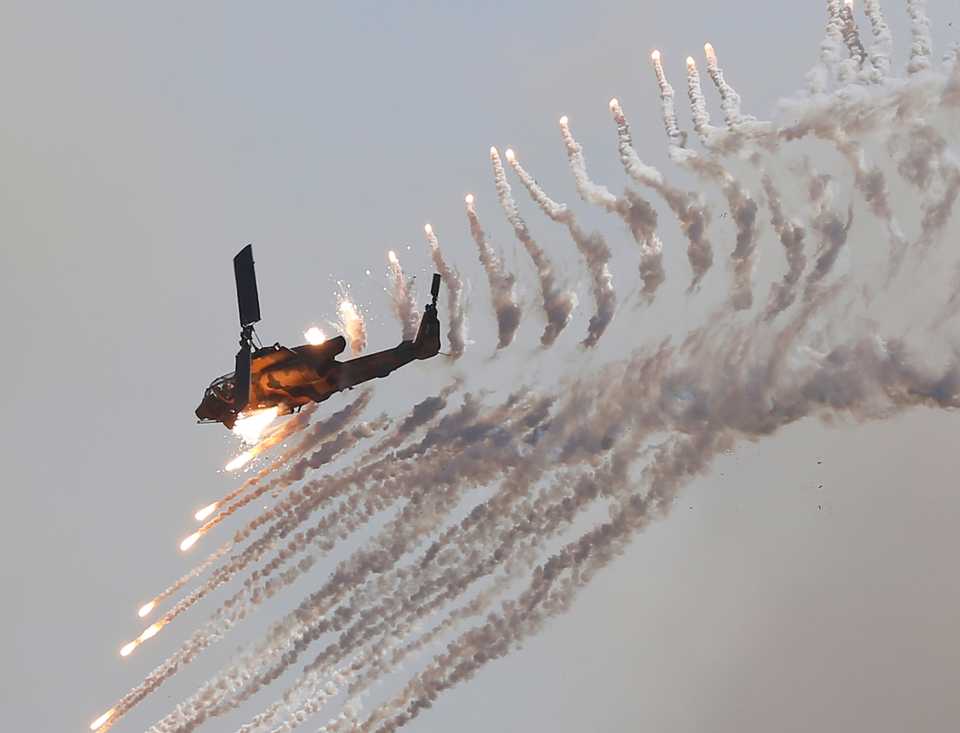
The T-129 has the capacity to simultaneously carry eight anti-tank missiles, 12 guided rockets, two stingers and 500 rounds of ammunition for the automatic gun.
A total of 91 T-129 ATAK helicopters will be delivered to Turkish Land Forces and nine to the Turkish Interior Ministry according to the program of Turkish Aerospace Industries (TAI).
Medium and short-distance missiles
Another weapon deployed to the border is the T-122 Multiple Barrel Rocket Launcher (MRBL), which can be used day or night under any type of weather conditions. The T-122 MRBL provides effective fire support to military units moving forward in rural parts of Afrin.
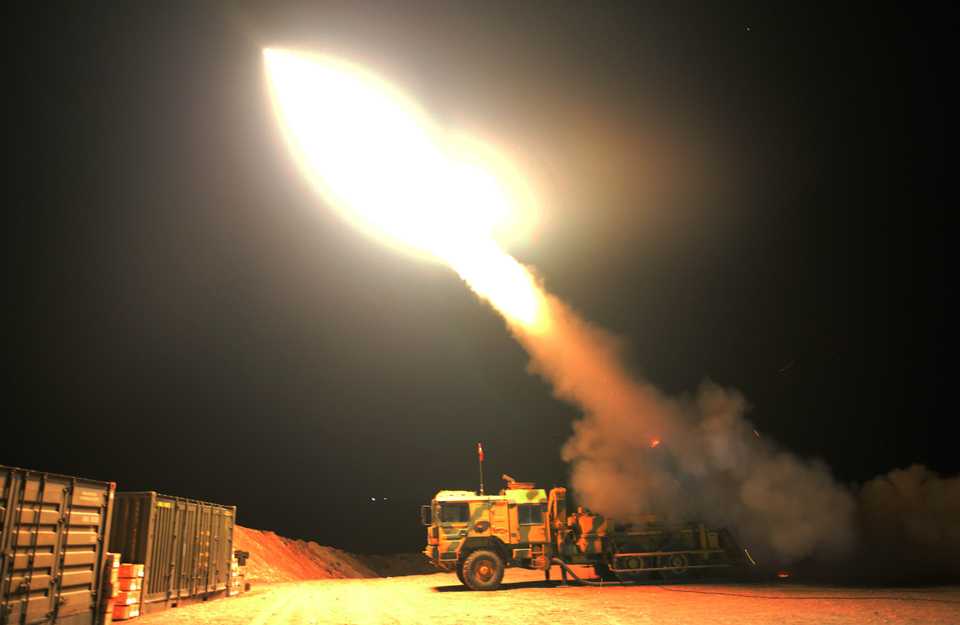
A land-based transportable system, KORAL, developed by Turkey’s leading defence company ASELSAN, is capable of intercepting, jamming and deceiving radar systems.
Air defence missile systems
Turkish authorities have long been working on both buying and producing domestic-made long-range air defence systems.
The French, Italian and Turkish defence ministers signed a letter of intent on cooperation in joint defence projects in November 2017.
Turkey is looking for a long-range missile system from the Franco-Italian Eurosam consortium, to transfer technology and train Turkish engineers so that Turkish partners ASELSAN and Roketsan can produce its own when Turkey needs more.
“The joint development activity is expected to support Turkey’s indigenous air and missile development programme in addition to opening up prospects for exports and longer-term cooperation of Turkey, Italy and France,” Eurosam said in January.
S-400 purchase from Russia
The S-400 is Russia’s most advanced long-range anti-aircraft missile system with a capacity of carrying three types of missiles capable of destroying targets including ballistic and cruise missiles.
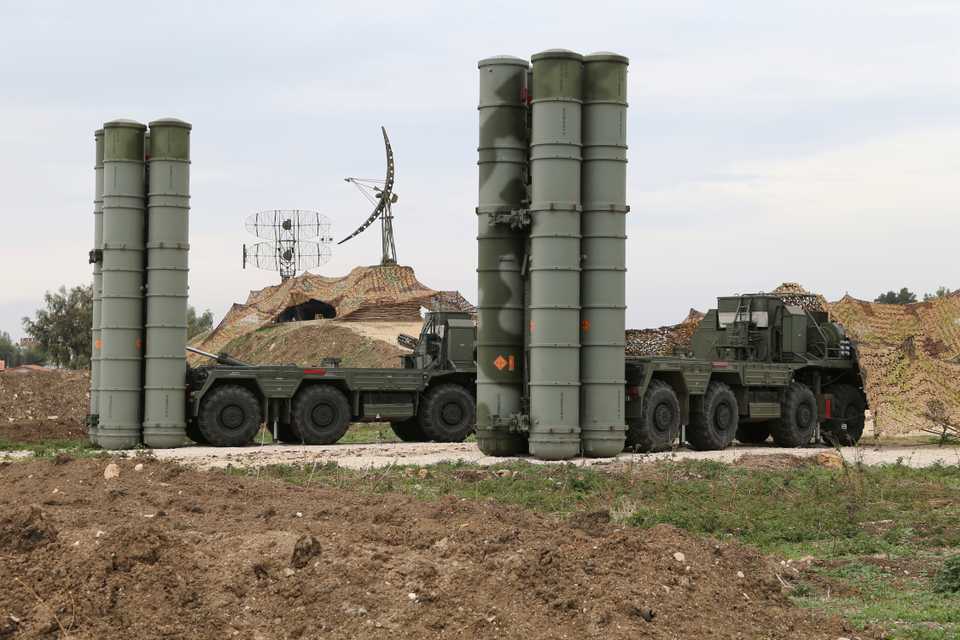
In early April, Moscow and Ankara agreed on an early delivery of the missiles when Russian President Putin visited Turkish capital Ankara.
Russia announced they started production on the S-400 air defence missile system for Turkey in late April.
The existence of Russian S-400 missiles on Turkish soil has annoyed the US.
The Chairman of the US Joint Chiefs of Staff General Joseph Dunford said Turkey’s possible purchase of Russian S-400 missile defence systems is “concerning.”
Shortly after Erdogan questioned, “Why would it be concerning? Every country needs to take certain measures for its own security.”
Turkey plans to make its S-400 compatible with NATO systems by making an interface program through IFF coding (friend and foe identification program) to be provided by Aselsan, a Turkish defence industry firm.
In 2006, Turkey failed to make a deal with American companies to produce joint attack helicopters. The US refused to give Turkey the codes. This purchase will let Turkey acquire “know-how” and allow a transfer of technology.
Become arm exporter
According to data released by the SIPRI, Turkey has increased its arms exports, in terms of units, 72 in 2010 to 244 in 2017.
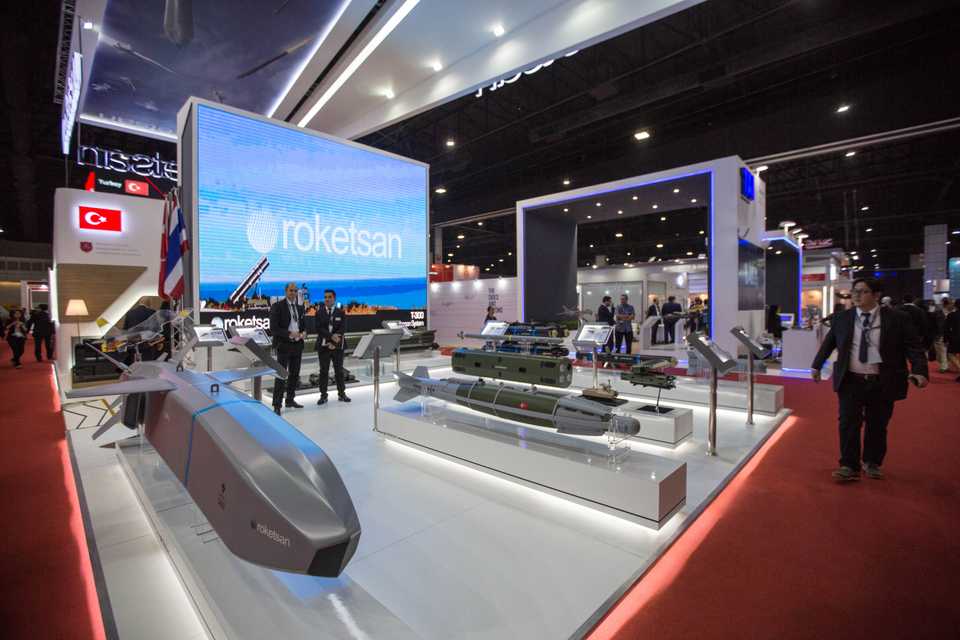
Saudi Arabia, the UAE, Azerbaijan, Malaysia, Pakistan, Qatar and Turkmenistan are major buyers of arms, artillery, missiles, ships, aircrafts and armored vehicles.

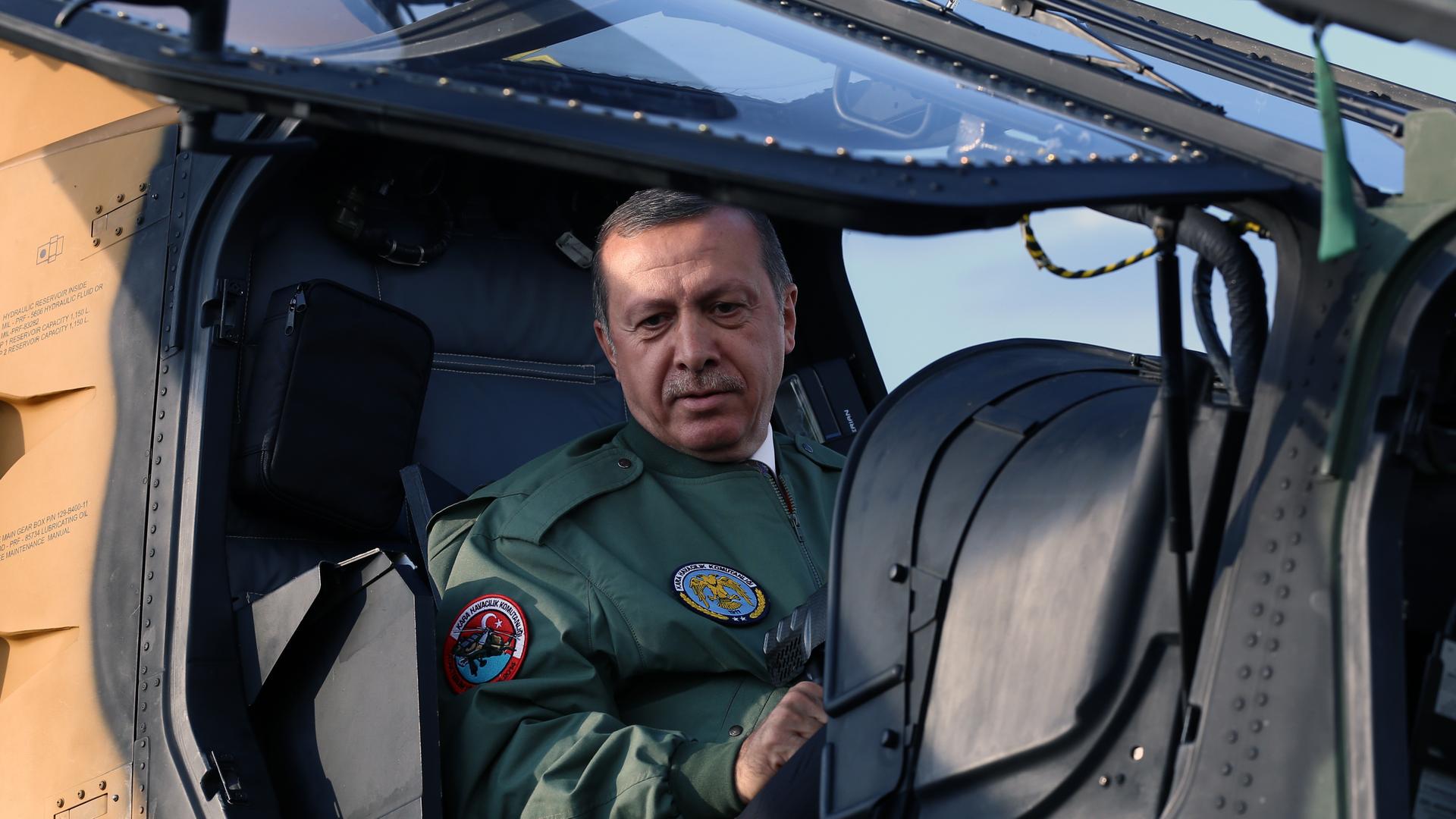








Discussion about this post